40 integumentary system with labels
The Layers of the Integumentary System - ThoughtCo The integumentary system is the body's first line of defense against bacteria , viruses, and other pathogens. It also helps provide protection from harmful ultraviolet radiation. The skin is a sensory organ, too, with receptors for detecting heat and cold, touch, pressure, and pain. Integumentary System | Biology for Majors II - Lumen Learning The integumentary system consists of the skin, hair, nails, the subcutaneous tissue below the skin, and assorted glands.The most obvious function of the integumentary system is the protection that the skin gives to underlying tissues. The skin not only keeps most harmful substances out, but also prevents the loss of fluids.
The Integumentary System The Integumentary System Lab Exercise # 4 Integumentary System Dr. McGehee Anatomy and Physiology I 03/04/2013 What are the major characteristics of the skin? •Waterproof, stretchable, washable, and repairable •One of the largest organ systems of the body •Functions: -Regulation of temperature -Osmoregulation -Excretion

Integumentary system with labels
Integumentary System Anatomy and Physiology - Nurseslabs The skin and its derivatives (sweat and oil glands, hair and nails) serve a number of functions, mostly protective; together, these organs are called the integumentary system. ADVERTISEMENTS Structure of the Skin The skin is composed of two kinds of tissue: the outer epidermis and the underlying dermis. Epidermis Integumentary System - Building a Medical Terminology Foundation The integumentary system refers to the skin and its accessory structures. In the adult human body, the skin makes up about 16 percent of body weight and covers an area of 1.5 to 2 m 2. In fact, the skin and accessory structures are the largest organ system in the human body. Integumentary System Labeling and Questions worksheet student.docx Integumentary System Objectives Checklist. After completion of this lab you should be able to: list the general functions of the integumentary system and explain how the skin and its accessory organs carries out these functions identify the structures of the skin and its accessory organs as well as the different types of tissues and cells that make up the major layers of the skin compare the ...
Integumentary system with labels. Lab 3: Integumentary System - Anatomy & Physiology: BIO 161 / 162 ... Lab 16: Endocrine System ; AP 2: BIO162 Toggle Dropdown. Chapter 18: The Cardiovascular System: Blood ; Chapter 19: The Cardiovascular System: The Heart ; Chapter 20: The Cardiovascular System: Blood Vessels & Circulation ; Chapter 21: The Lymphatic & Immune System ; Chapter 22: The Respiratory System ; Chapter 23: The Digestive System The Integumentary System Accessory Structures: Nails They are part of the integumentary system, which includes your skin and all its accessory structures like nails, hair, and sweat and oil glands. While they can be used for many things, like ... Integumentary System | histology Ross and Pawlina (6th ed), Chapter 15 Integumentary System, pgs. 488-525 Back to Top Learning Objectives Be able to identify principal layers of the skin (epidermis, dermis and hypodermis) at the light microscope level and know the principal functions of each layer. Label the Integumentary System Quiz - PurposeGames.com About this Quiz This is an online quiz called Label the Integumentary System There is a printable worksheet available for download here so you can take the quiz with pen and paper. Your Skills & Rank Total Points 0 Get started! Today's Rank -- 0 Today 's Points One of us! Game Points 10 You need to get 100% to score the 10 points available Actions
integumentary system labeling Flashcards and Study Sets | Quizlet Learn integumentary system labeling with free interactive flashcards. Choose from 5,000 different sets of integumentary system labeling flashcards on Quizlet. Integumentary System | Skin Model Anatomy - YouTube Official Ninja Nerd Website: Nerds!In this lecture Professor Zach Murphy will be teaching you about different layers of the skin i... Integumentary System - Diagram - How It Works | Live Science The integumentary system, or skin, is the largest organ in the body. Besides the skin, it comprises the hair and nails as well, which are appendages of the skin. In humans, this system accounts ... Integumentary System Labeling Diagram | Quizlet How can a fractured diaphysis release fat globules into the bloodstream? a. The bone pierces fat stores in the skin. b. The yellow marrow in the diaphysis is exposed and damaged. c. The injury triggers the body to release fat from healthy bones. d. The red marrow in the fractured bone releases fat to heal the fracture. Verified answer.
Integumentary System: Definition, Function, Organs & Diseases IN humans the integumentary system includes the skin - a thickened keratinized epithelium made of multiple layers of cells that is largely impervious to water. It also contains specialized cells that secrete melanin to protect the body from the carcinogenic effects of UV rays and cells that have an immune function. Integumentary System Labeling Quiz - PurposeGames.com An unregistered player played the game 3 weeks ago About this Quiz This is an online quiz called Integumentary System Labeling There is a printable worksheet available for download here so you can take the quiz with pen and paper. From the quiz author Select the correct structure found in the Integumentary System. Your Skills & Rank Total Points 0 PDF The Integumentary System - Los Angeles Mission College Functions of the Integumentary system 1. protection a) chemical factors in the skin: Sebum (or oil) from the sebaceous glands is slightly acidic, retarding bacterial colonization on the skin surface. Sweat from the sudoriferous glands is slightly hypertonic and can flush off most bacteria on the skin surface. Integumentary system - Wikipedia The integumentary system includes hair, scales, feathers, hooves, and nails. It has a variety of additional functions; it may serve to maintain water balance, protect the deeper tissues, excrete wastes, and regulate body temperature, and is the attachment site for sensory receptors to detect pain, sensation, pressure, and temperature. Contents
Integumentary System (labeling) Quiz - Quizizz Play this game to review undefined. Identify the structure indicated
Integumentary System - Histology 7. Integumentary System. integumentary system. Human skin is divided into two main parts: the dermis and the epidermis. The dermis is made of connective tissue and is covered on its surface by a thick layer of stratified squamous epithelium that we call the epidermis. The dermis is a highly vascularized tissue, while the epidermis - - like ...
Integumentary system parts: Quizzes and diagrams | Kenhub Integumentary system quiz and answers One of the best ways to start learning about a new system, organ or region is with a labeled diagram showing you all of the main structures found within it. Not only will this introduce you to several new structures together, it will also give you an overview of the relations between them.
Integumentary System and Mammary Gland | histology The skin and its associated structures, hair, sweat glands and nails make up the integumentary system. ... Match the text descriptions below with the appropriately feature that is labeled by a letter in the tissue section. Some labeled features may be referred to once, more than once, or not at all. ...
The Integumentary System: Your Skin, Hair, Nails, and Glands The integumentary system includes organs and structures such as the skin, hair, nails, glands, and nerves. The primary function of the integumentary system is to serve as a barrier between the inside of the body and elements in the environment like bacteria, pollution, and UV rays from the sun.
Integumentary Structures and Functions - Anatomy & Physiology - CCCOnline Gross Anatomy of the Integumentary System. The skin is made up of two mutually dependent layers that are distinguished based on their structure and location. These layers - the epidermis and the dermis - contain a variety of structures, including blood vessels, hair follicles, and sweat glands. Beneath the dermis lies the hypodermis (subcutis).
Integumentary System - Innerbody The integumentary system is an organ system consisting of the skin, hair, nails, and exocrine glands. The skin is only a few millimeters thick yet is by far the largest organ in the body. The average person's skin weighs 10 pounds and has a surface area of almost 20 square feet.
What Are the 5 Parts of the Integumentary System? The 5 parts of the integumentary system—skin, hair, nails, glands, and nerves—protect the body from environmental elements The integumentary system is made up of organs and structures that protect the inside of the body from environmental elements. The 5 parts of the integumentary system include: Skin Hair Nails Glands Nerves Skin
Integumentary system: Definition, diagram and function | Kenhub Broadly speaking, the integumentary system is composed of skin and its appendages, subcutaneous tissue, deep fascia, mucocutaneous junctions, and breasts. This article will discuss all of these components in detail together with some clinical notes about them and the integumentary system as a whole. Contents Components Skin Functions Layers
How To Draw Skin Layers | Integumentary System - YouTube #skindiagram #skinanatomy #adimushowKnowledge of human skin is not only important for biology students but also for medical students. Here we expect to deliv...
Integumentary System Labeling and Questions worksheet student.docx Integumentary System Objectives Checklist. After completion of this lab you should be able to: list the general functions of the integumentary system and explain how the skin and its accessory organs carries out these functions identify the structures of the skin and its accessory organs as well as the different types of tissues and cells that make up the major layers of the skin compare the ...
Integumentary System - Building a Medical Terminology Foundation The integumentary system refers to the skin and its accessory structures. In the adult human body, the skin makes up about 16 percent of body weight and covers an area of 1.5 to 2 m 2. In fact, the skin and accessory structures are the largest organ system in the human body.
Integumentary System Anatomy and Physiology - Nurseslabs The skin and its derivatives (sweat and oil glands, hair and nails) serve a number of functions, mostly protective; together, these organs are called the integumentary system. ADVERTISEMENTS Structure of the Skin The skin is composed of two kinds of tissue: the outer epidermis and the underlying dermis. Epidermis



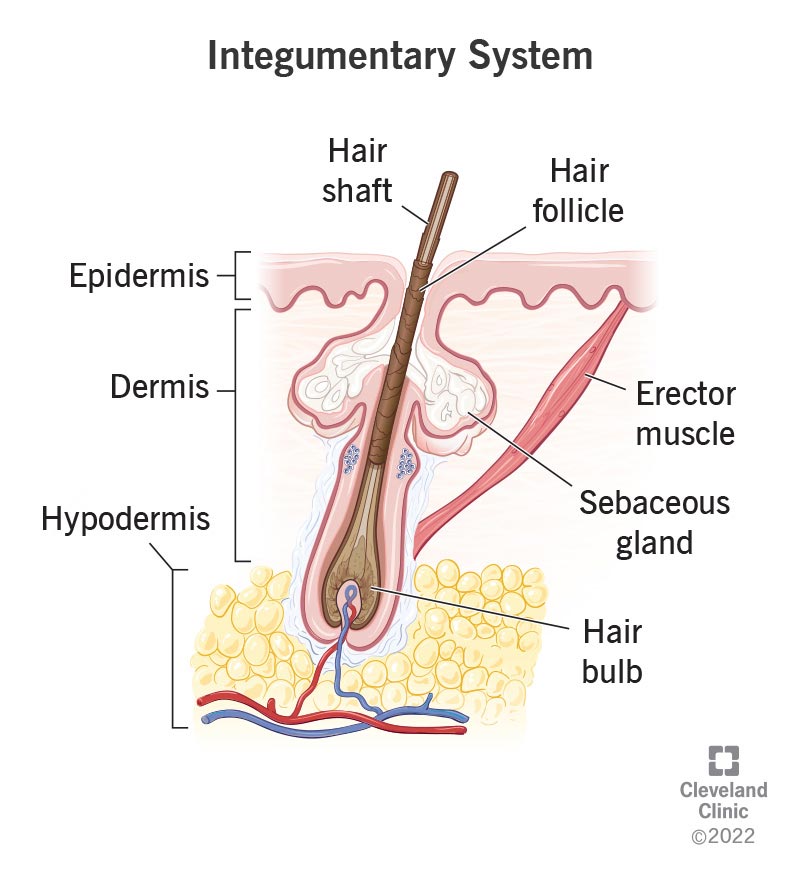
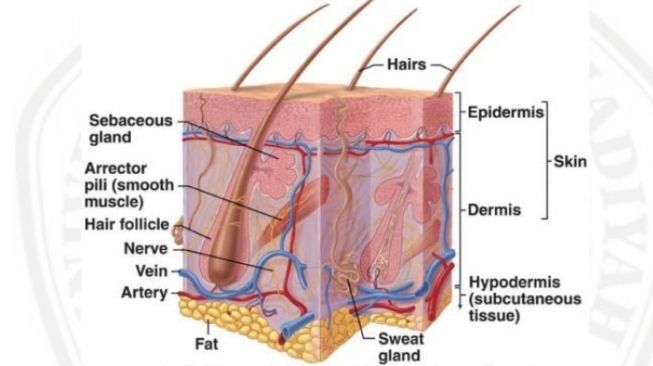


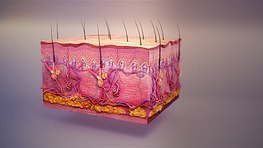
:background_color(FFFFFF):format(jpeg)/images/library/11027/labeled_diagram_anatomy_of_integumentary_system.jpg)

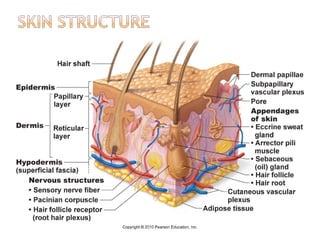
(118).jpg)

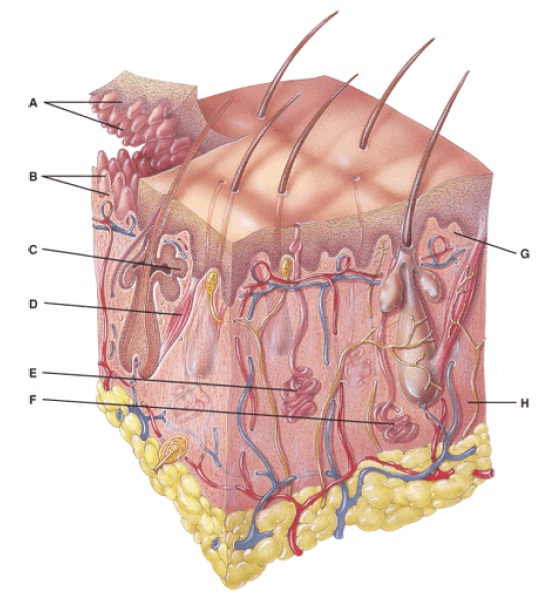
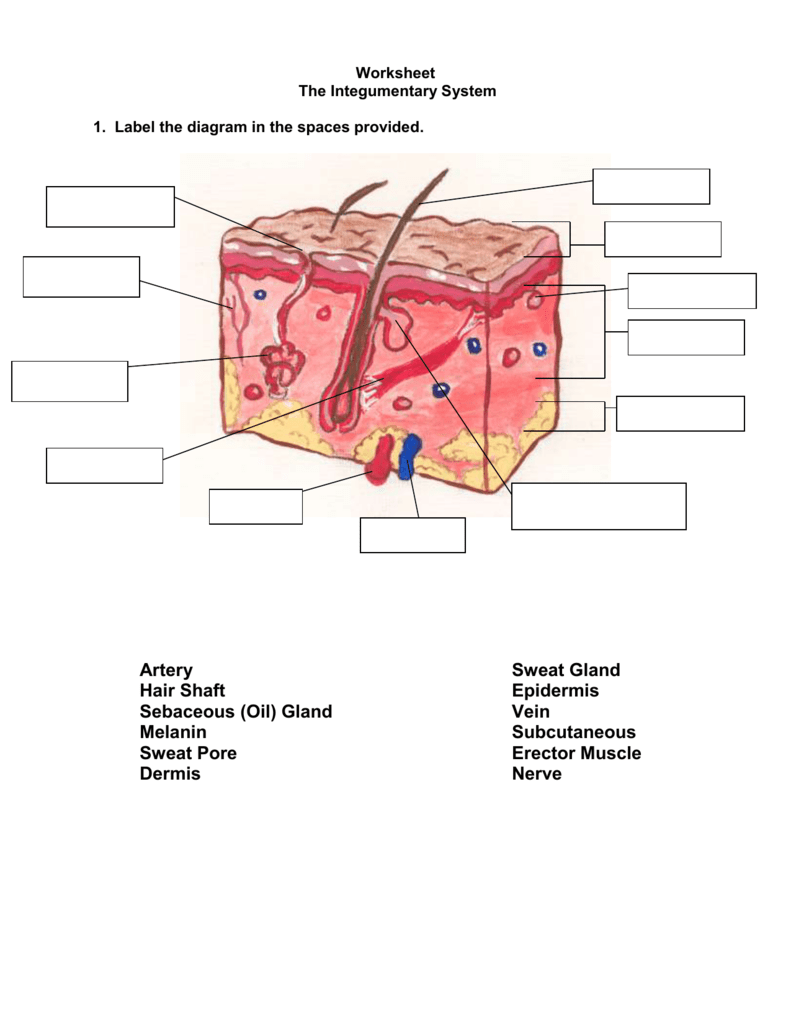
:watermark(/images/watermark_5000_10percent.png,0,0,0):watermark(/images/logo_url.png,-10,-10,0):format(jpeg)/images/overview_image/1806/RdfeATglTRE1xj1O43IXYA_skin-histology_low_mag_english.jpg)

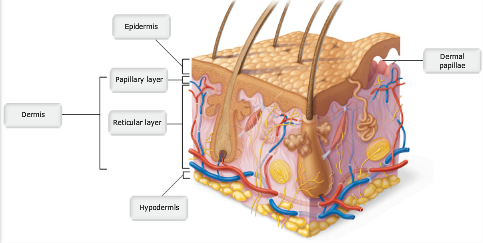

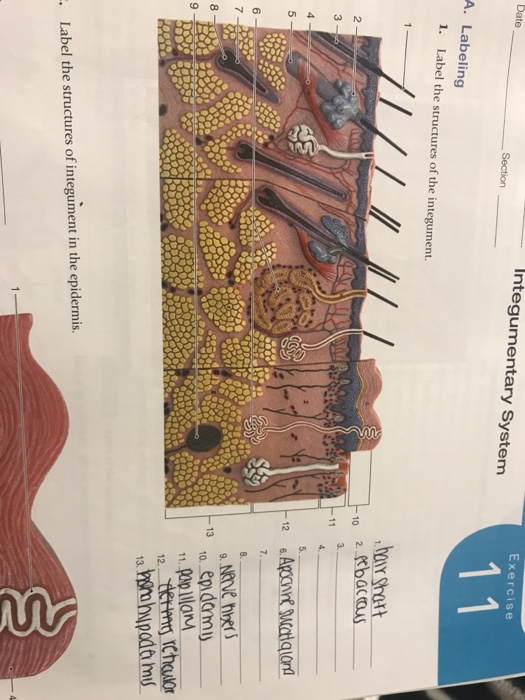
:watermark(/images/watermark_only_sm.png,0,0,0):watermark(/images/logo_url_sm.png,-10,-10,0):format(jpeg)/images/anatomy_term/thick-skin/5Zn7iePsQDxeSjTk2BevA_Thick_skin.png)

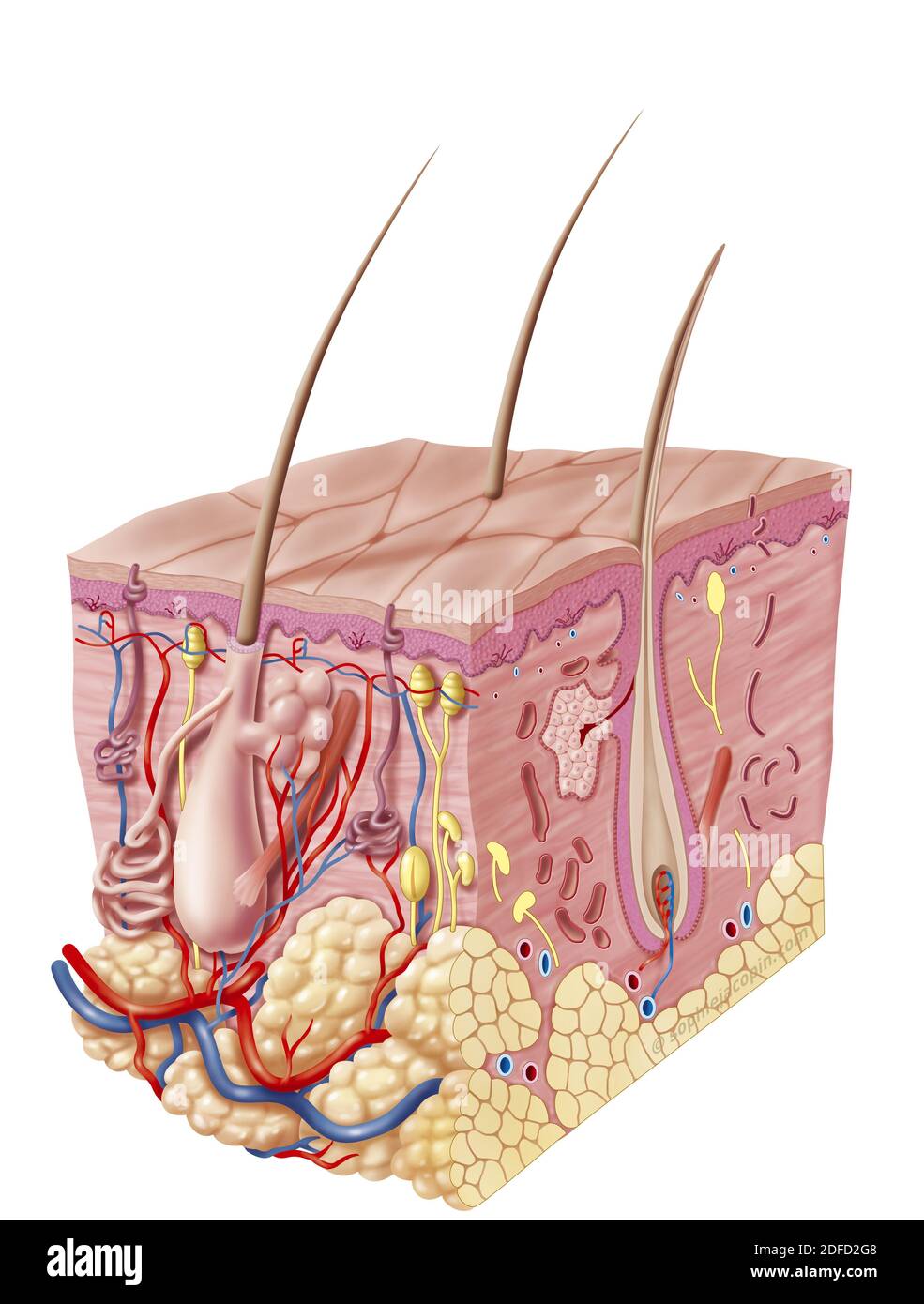
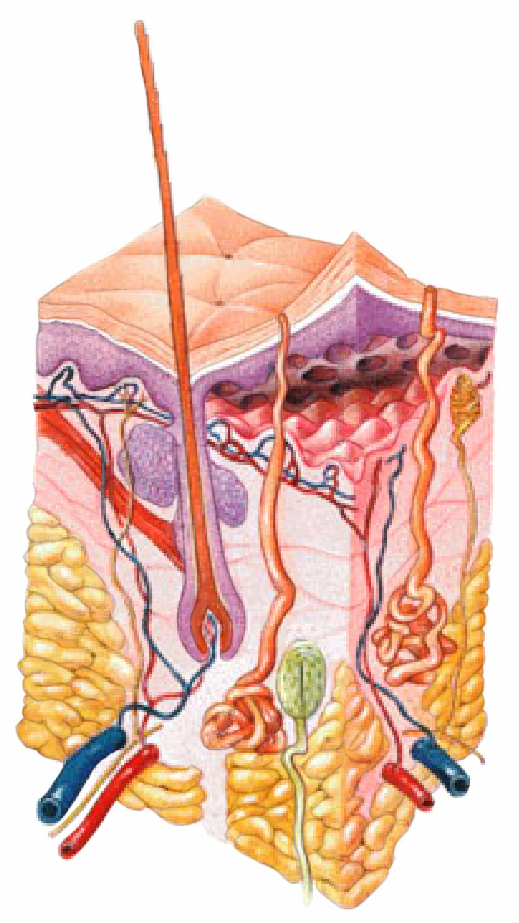


:watermark(/images/watermark_only_sm.png,0,0,0):watermark(/images/logo_url_sm.png,-10,-10,0):format(jpeg)/images/anatomy_term/eccrine-sweat-gland/j3XbBPDKR19nrZ8zUlfpeA_Eccrine_sweat_gland.png)


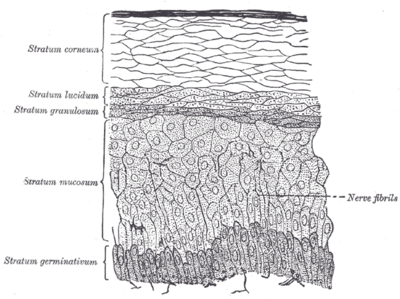


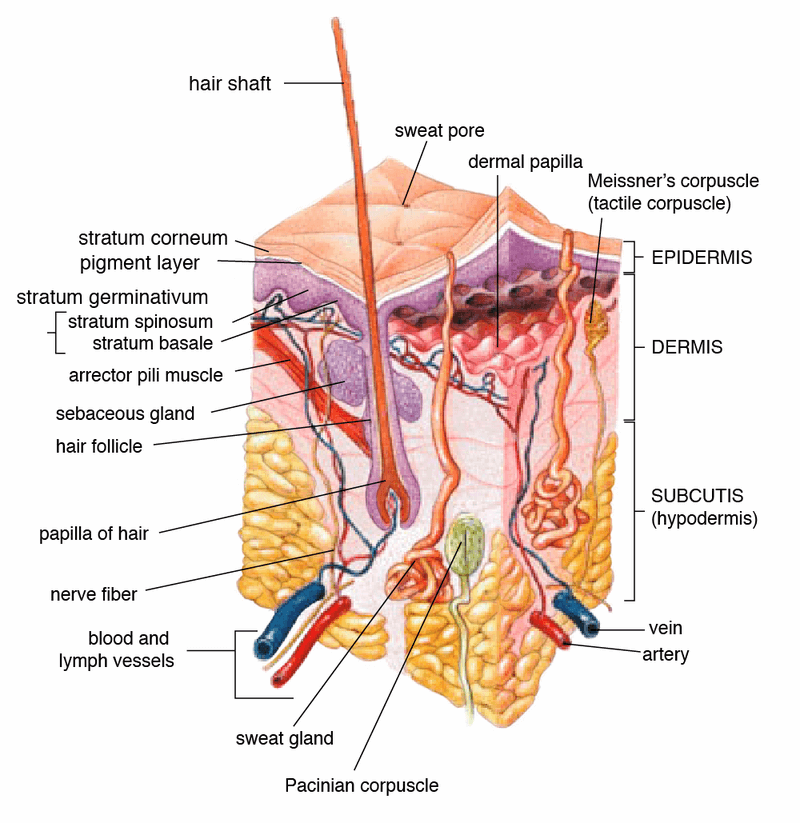



Post a Comment for "40 integumentary system with labels"